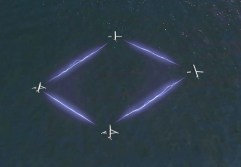NDAA’s new protest pilot could send ripples through IT contracting

Tucked within the 2018 National Defense Authorization Act’s many technology proposals is one that the potential to upend the IT contracting environment.
The NDAA, which is headed to President Donald Trump’s desk after final action in the Senate on Thursday, includes a three-year Department of Defense pilot that would require all contractors with $250 million in revenue in the year prior to pay for the cost of a failed contract protest.
The pilot, which is restricted to DOD acquisition programs, could have a significant impact not only on IT procurement in the defense sector, but also beyond it, as federal agencies seek to curb the number of protest awards.
“I can see this spreading across the government like bamboo spreads in a yard,” said Eric Crusius, a senior counsel at Holland & Knight that specializes in government contracting.
“I think other agencies are going to wait and see how it works in DoD, but I think this, coupled with the other new change where contractors protesting will get a look at the source selection decisions will allow [them] to maybe make more comprehensive decisions about whether to protest or not.”
The Government Accountability Office reported on Nov. 13 that contract protests had fallen 7 percent, from 2,789 cases in fiscal 2016 to 2,596 in fiscal 2017, ending a four-year trend.
But that hasn’t stopped talk within government acquisition circles about how to tamp down on the number of protests filed, especially after they toppled large contracts like the $1.5 billion Department of Homeland Security’s Flexible Agile Support for the Homeland, or FLASH, this summer.
The NDAA isn’t the only place where the penalty proposal has come up. In a blog post on May 2, Mary Davie, assistant commissioner for the Office of Information Technology Category within the Federal Acquisition Service, detailed a similar plan that was discussed at a roundtable with 50 representatives of IT service companies that contract with the government.
There are still a number of questions surrounding the pilot, including what costs would a contractor be subject to pay following a protest denial, do they include lawyer’s fees and what happens if the contractor disputes the revenue numbers.
“Depending on how the regulations are written, it could change the calculus for a lot of contractors as far as whether they are going to protest a procurement or not,” Crusius said. “A lot of IT contractors work on pretty low margins, especially the resellers, and a $250 million company is not necessarily that big. Those contractors would have a huge financial burden if they have to pay DoD’s cost after protest.”
Crusius added that because contractors file their revenue in different ways, there are a lot of questions how the DoD will calculate who belongs in the pilot.
“It’s a $250 million number, but nobody knows how that number is going to be decided,” he said. “Will it be based on revenue booked, revenues charged? Would it be based on the calendar year or the financial year the company uses? There’s a lot of open questions about how that revenue number is going to be determined.”
The pilot program is set to take effect in 2019 and run until 2022.





